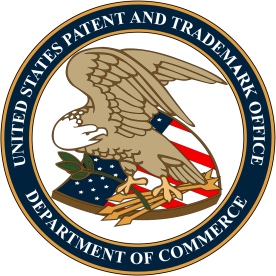On October 17, 2019, the USPTO published an October 2019 Patent Eligibility Guidance Update to the earlier 2019 Revised Patent Subject Matter Eligibility Guidance published in January, 2019.
From the practitioner standpoint, the message continues to be encouraging.
The Updated Guidance focuses heavily on the improvement to a technology or technical field pathway to eligibility, and (at least until the Court changes things again) directs practitioners to focus our drafting/arguments on the following aspects (paraphrasing):
-
Novel/non-obvious limitations; and
-
Improvements such novel/non-obvious limitations infer (need not be in the claims themselves–but is taken at face value from the application, even from the specification alone).
From the Updated Guidance
If you don’t read the entirety of the Updated Guidance, at least skim the below (selections taken from pp. 11-13):
“[I]f the additional limitations reflect an improvement in the functioning of a computer, or an improvement to another technology or technical field, the claim integrates the judicial exception into a practical application and thus imposes a meaningful limit on the judicial exception. No further analysis is required. The claim is eligible at Step 2A. . . . Since the claim improves technology, the claim imposes meaningful limits on any recited judicial exception, and the claim would be eligible under the 2019 PEG at least at Step 2A Prong Two.”
October 2019 Patent Eligibility Guidance Update at p. 11.
“As also explained in the 2019 PEG, the Prong Two analysis considers the claim as a whole. That is, the limitations containing the judicial exception as well as the additional elements in the claim besides the judicial exception need to be evaluated together to determine whether the claim integrates the judicial exception into a practical application. The additional limitations should not be evaluated in a vacuum, completely separate from the recited judicial exception. Instead, the analysis should take into consideration all the claim limitations and how those limitations interact and impact each other when evaluating whether the exception is integrated into a practical application.”
“An important consideration to evaluate when determining whether the claim as a whole integrates a judicial exception into a practical application is whether the claimed invention improves the functioning of a computer or other technology…. In short, first the specification should be evaluated to determine if the disclosure provides sufficient details such that one of ordinary skill in the art would recognize the claimed invention as providing an improvement. The specification need not explicitly set forth the improvement, but it must describe the invention such that the improvement would be apparent to one of ordinary skill in the art. Conversely, if the specification explicitly sets forth an improvement but in a conclusory manner (i.e., a bare assertion of an improvement without the detail necessary to be apparent to a person of ordinary skill in the art), the examiner should not determine the claim improves technology. Second, if the specification sets forth an improvement in technology, the claim must be evaluated to ensure that the claim itself reflects the disclosed improvement. That is, the claim includes the components or steps of the invention that provide the improvement described in the specification. The claim itself does not need to explicitly recite the improvement described in the specification (e.g., “thereby increasing the bandwidth of the channel”).”
October 2019 Patent Eligibility Guidance Update at p. 12.
“Consideration of improvements is relevant to the integration analysis regardless of the technology of the claimed invention. That is, the consideration applies equally whether it is a computer-implemented invention, an invention in the life sciences, or any other technology. . . . Note, there is no requirement for the judicial exception to provide the improvement. The improvement can be provided by one or more additional elements (as in Diehr), or by the additional element(s) in combination with the recited judicial exception (as in Finjan).73 Thus, it is important for examiners to analyze the claim as a whole when determining whether the claim provides an improvement to the functioning of computers or an improvement to other technology or technical field.”
October 2019 Patent Eligibility Guidance Update at p. 13.
Practical Considerations
In responding to 101 rejections, I don’t recommend getting into multi-page arguments with the Examiners—merely point out the improvement described in the specification and the claim element that represents or enables such improvement, then state that such improvement is to a technology or technical field and is thus eligible as described and detailed portion of Updated Guidance provided above, consistent with the ruling of the Court in Alice Corp. v. CLS Bank International.
Here, less is more. Don’t get into the weeds (unless you have to).
A simple 101 response:
“Claims [[1-20]] were rejected under 35 U.S.C. 101 as allegedly being directed to non-statutory subject matter. Applicant traverses.
“As described in the October 2019 Patent Eligibility Guidance Update and consistent with the ruling of the Court in Alice Corp. v. CLS Bank International, an improvement to a technology or a technical field is patent eligible. See October 2019 Patent Eligibly Guidance Update at pp. 11-13; Alice Corp. v. CLS Bank International, 134 S. Ct. 2347 at 2358 (2014) (citing Mayo Collaborative Services v. Prometheus Laboratories, Inc., 566 U.S. ___, 132 S.Ct. 1289, 1299, 182 L.Ed.2d 321 (2012); and Diamond v. Diehr, 450 U.S. 175, 187, 101 S.Ct. 1048, 67 L.Ed.2d 155 (1981)).
“Applicant submits that the present claims provide a clear and distinct improvement to an existing technology or technological field. For example, [[insert broad description of technology and cite to spec portions describing improvement]]. The claimed subject matter, including, for example, [[cite element(s) from claims]], enables such [[improvement]]. Accordingly, Applicant submits that such claims are patent eligible and requests withdrawal of such rejection and allowance of said claims.”
When drafting cases, make sure to focus inventors on those two original aspects above (asked slightly differently):
-
“What is the one thing (or combination of things) you’re doing that nobody has done before?”; and
-
“What benefit does that (do those) new thing(s) provide?”
-
If the initial benefit described isn’t technical in nature (e.g., diagnostic, human-activity, etc.), re-focus the inventors to describe a technical improvement of the subject matter (e.g., computation/power/storage efficiency, additional features/capabilities, etc.); and
-
Write that technological improvement into the specification in some non-limiting fashion.
-



 i
i


